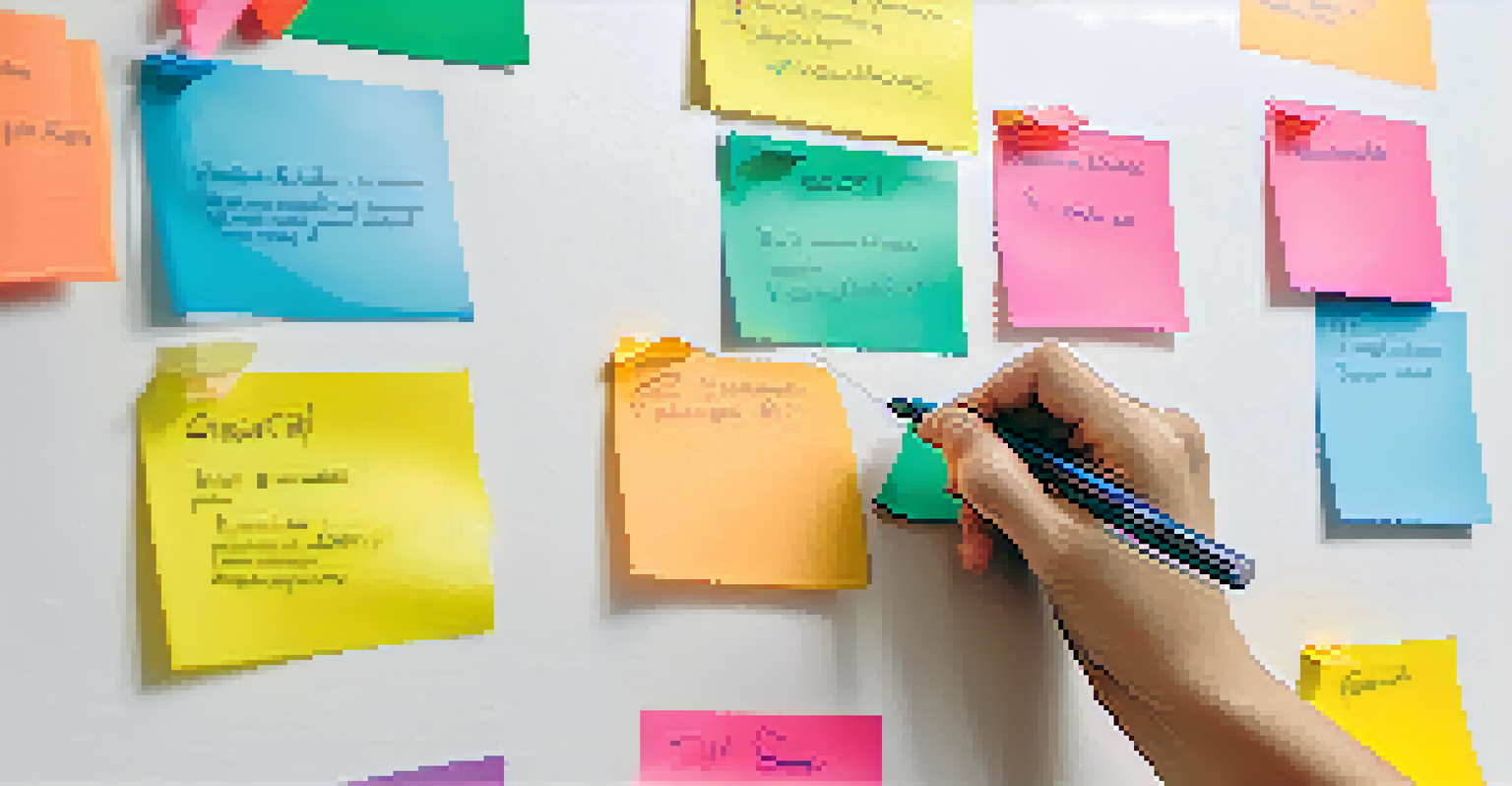Best Practices for Facilitating Teacher Learning Groups

Establish Clear Goals for Teacher Learning Groups
Setting clear, achievable goals is the foundation of a successful teacher learning group. These goals should align with the broader educational objectives, ensuring that every participant understands the purpose of their collaboration. For example, if the objective is to improve student engagement, the group might focus on sharing strategies that have worked in their classrooms.
Collaboration allows teachers to capture each other's fund of collective intelligence.
When everyone is on the same page, it fosters a sense of accountability and direction. Participants become more invested in the outcomes, knowing that their efforts contribute to a shared vision. This clarity not only motivates teachers but also enhances the overall effectiveness of the group.
To ensure that goals are not just lofty ideals, revisit them regularly. This helps the group to stay focused and allows for adjustments based on what is or isn’t working. Celebrating small victories along the way can also boost morale and reinforce commitment.
Create a Safe and Supportive Environment
A safe and supportive environment is essential for open dialogue among teachers. When educators feel secure in sharing their thoughts and experiences, it encourages honesty and vulnerability, which are crucial for growth. Imagine a circle of friends where everyone can express their true selves without fear of judgment—that’s the kind of atmosphere you want to cultivate.

Building this environment starts with establishing ground rules that promote respect and confidentiality. Encourage participants to listen actively and respond constructively. This not only fosters trust but also helps to create a culture of learning where teachers can freely share their successes and struggles.
Furthermore, consider incorporating team-building activities to strengthen relationships. The more comfortable teachers are with one another, the more likely they are to engage deeply in discussions and share valuable insights.
Encourage Collaborative Learning and Sharing
Collaboration is at the heart of effective teacher learning groups. Encouraging participants to share their resources, strategies, and experiences can lead to richer discussions and a wider range of perspectives. Think of it like a potluck dinner—everyone brings their unique dish to the table, creating a diverse banquet of ideas.
The greatest gift is not being afraid to question.
Create opportunities for teachers to work together on projects or lesson plans, allowing them to learn from one another in real-time. Group brainstorming sessions can spark creativity and innovation, leading to solutions that may not have been considered individually.
Moreover, facilitating peer observations can be incredibly beneficial. Watching a colleague in action provides practical insights and can inspire new approaches, further enriching the group’s collective knowledge.
Incorporate Data-Driven Decision Making
Data-driven decision making is a powerful tool for teacher learning groups. By analyzing student performance data, educators can identify trends and areas for improvement, ensuring that discussions are grounded in concrete evidence. For instance, if test scores reveal a particular subject area where students are struggling, the group can focus their efforts on developing effective strategies to address this gap.
Encourage teachers to bring their data to the table and share their findings. This collaborative analysis can lead to actionable insights and foster a culture of continuous improvement. It’s about moving beyond anecdotal evidence and embracing a more systematic approach to teaching.
Regularly revisiting the data allows the group to measure progress and adjust their strategies as needed. This cyclical process not only enhances accountability but also ensures that the group remains responsive to the evolving needs of their students.
Implement Reflective Practices for Continuous Improvement
Reflection is a vital component of any learning experience, and teacher learning groups are no exception. Encouraging educators to reflect on their practices can lead to deeper insights and a greater understanding of their teaching methods. Consider using guided reflection prompts to help facilitate meaningful discussions.
Incorporating time for reflection at the end of each meeting allows participants to process what they’ve learned and identify actionable steps for improvement. This practice not only reinforces learning but also empowers teachers to take ownership of their professional growth.
Additionally, creating a space for sharing reflections can enrich the group’s collective understanding. When teachers articulate their thoughts and experiences, it fosters a culture of shared learning and encourages others to think critically about their own practices.
Utilize Technology to Enhance Collaboration
Technology can be a game changer in facilitating teacher learning groups. Utilizing digital tools for collaboration, such as shared documents or communication platforms, allows for continuous engagement outside of meetings. Teachers can share resources and ideas in real-time, making the learning process more dynamic and accessible.
Consider using video conferencing tools for virtual meetings, especially if participants are in different locations. This flexibility ensures that all teachers can participate, regardless of their schedules. Plus, it opens up opportunities for connecting with educators from other schools or districts, broadening the learning experience.
Additionally, exploring educational apps that provide professional development resources can enrich discussions. By integrating technology into the group’s activities, you not only enhance communication but also create a more engaging and interactive learning environment.
Celebrate Achievements and Foster Community
Celebrating achievements, both big and small, can significantly boost morale within teacher learning groups. Acknowledging progress reinforces the value of collaboration and encourages ongoing participation. Whether it’s sharing successful lesson plans or recognizing personal growth, celebrating milestones creates a sense of community and belonging.
Consider hosting informal gatherings or recognition events to highlight the group’s accomplishments. These moments of celebration can strengthen relationships and foster a positive culture of support among educators. Just like a team celebrating a victory, these shared experiences can deepen connections.

Moreover, encouraging teachers to share their successes publicly, such as through newsletters or social media, can amplify their achievements and inspire others. This not only builds confidence but also promotes a culture of pride in professional growth.